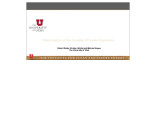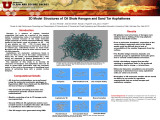TO
| Title | Date | Subject | Description | ||
|---|---|---|---|---|---|
| 176 |
 |
Digitized log file, API Number 4301330380 | 2009 | This log was digitized by the Utah Geological Survey from image files (.tiff) compiled by the Utah Division of Oil, Gas, and Mining | |
| 177 |
 |
Fischer Assay Data, Utah Geological Survey Well Number U356 | 2008 | This dataset contains the results of Fischer assay analyses obtained and published by the Utah Geological Survey for well U356. | |
| 178 |
 |
Fischer Assay Data, Utah Geological Survey Well Number U496 | 2008 | This dataset contains the results of Fischer assay analyses obtained and published by the Utah Geological Survey for well U496. | |
| 179 |
 |
Fischer Assay Data, Utah Geological Survey Well Number U108 | 2008 | This dataset contains the results of Fischer assay analyses obtained and published by the Utah Geological Survey for well U108. | |
| 180 |
 |
Fischer Assay Data, Utah Geological Survey Well Number U435 | 2008 | This dataset contains the results of Fischer assay analyses obtained and published by the Utah Geological Survey for well U435. | |
| 181 |
 |
Fischer Assay Data, Utah Geological Survey Well Number U493 | 2008 | This dataset contains the results of Fischer assay analyses obtained and published by the Utah Geological Survey for well U493. | |
| 182 |
 |
A market assessment of heavy oil, oil sands, and oil shale resources | 2011-03-10 | unconventional fuels; market assessment; developing domestic heavy oil, oil sands, and oil shale resources; preliminary infrastructure needs | A presentation given at the Unconventional Fuels from Oil Shale and Oil Sands Project Review Meeting on March 10-11, 2011. |
| 183 |
 |
Oil Shale Process Model (OSP) code development manual | 1994-12-06 | Oil Shale Process model; OSP; 4TU-Pilot; HRS; Hot-Recycled-Solid; Lawrence Livermore National Laboratory | The Oil Shale Process (OSP) model has proven to be a useful tool for the analysis of the steady-state operation of Lawrence Livermore National Laboratory's Hot-Recycled- Solids 4 tonne-per-day Pilot Retort (4TU-Pilot). This manual has been developed to guide a user through the development of source ... |
| 184 |
 |
Oil Shale Process Model (OSP) user's manual | 1995-01-05 | Oil Shale Process model; OSP; 4TU-Pilot; Hot-Recycled-Solids; HRS; Lawrence Livermore National Laboratory | The Oil Shale Process (OSP) model has proven to be a useful tool for the analysis of the steady-state operation of Lawrence Livermore National Laboratory's Hot-Recycled- Solids 4 tonne-per-day Pilot Retort (4TU-Pilot). This manual is being developed to serve as a guide to users of the OSP model. The... |
| 185 |
 |
Oil Shale Process Model (OSP) theory manual | 1994-12-06 | Oil Shale Process model; OSP; 4TU-Pilot; Hot-Recycled-Solids; HRS; Lawrence Livermore National Laboratory | The Oil Shale Process (OSP) model has proven to be a useful tool for the analysis of the steady-state operation of Lawrence Livermore National Laboratory's Hot Recycled Solids 4 tonne-per-day Pilot Retort (4TU-Pilot). This manual has been developed to guide a user through the theoretical basis for e... |
| 186 |
 |
Oil-impregnated sandstone mapping project Nine Mile Canyon area Carbon and Duchesne Counties, Utah: A field examination for the Utah Geological Survey | 1971-10-04 | Tributaries; Nine Mile canyon; Argyle canyon; Uinta Basin; Deltaic facies; Green River Formation; Parachute Creek | A reconnaissance survey of tributaries to Nine Mile and Argyle canyons in the southern Uinta Basin showed widespread but erratic distribution of oil-impregnated sandstones. The occurrences are mainly in the Deltaic facies of the Green River formation. The bituminous material is believed to have been... |
| 187 |
 |
Oil shale project run summary, small retort: Run S-24 | 1981-10-07 | Oil shale; MIS; Modified in-situ oil shale retorting; Lawrence Livermore National Laboratory | A. Objective. Previous Lawrence Livermore National Laboratory pilot retort experiments, simulating modified in-situ (MIS) oil shale retorting, have employed relatively high (1-3 m/day) retorting rates. Such rates not only would have an obvious commercial economic advantage but, in pilot retort trial... |
| 188 |
 |
Oil-impregnated sandstones in Utah and Wayne Counties, Utah | 1972 | Thistle; Utah County; Jurassic sandstone; Thousand Lake Mountain; Wayne County; Oil-impregnated sediments; Asphalt-bearing Tertiary beds | Two little known occurrences of oil-impregnated sediments are discussed briefly. One is a fairly extensive area of asphalt-bearing Tertiary beds in the vicinity of Thistle, Utah County. The other is a very limited exposure of Jurassic sandstone permeated with dead oil on Thousand Lake Mountain in Wa... |
| 189 |
 |
Oil shale quarterly report | 1990-09-05 | Aboveground oil shale retorting; Hot-Recycled-Solid; HRS; Pyrolysis; Lawrence Livermore National Laboratory | We are studying aboveground oil shale retorting and have developed the LLNL Hot-Recycled-Solid (HRS) process as a generic, second-generation, rapid pyrolysis retorting system in which recycled shale is the solid heat carrier. In 1984-87, we operated a 1-tonne-per-day FIRS pilot plant to study retort... |
| 190 |
 |
Oil-impregnated sandstones of Raven Ridge, Vernal, Utah | 1972 | Oil-impregnated sandstone; Raven Ridge; Vernal, Utah; Uinta Basin; Utah; Colorado; Wasatch Formation; Green River Formation; Uinta Formation | The area of this report is in the northeastern part of the Uinta Basin of northeastern Utah and northwestern Colorado. The area covers approximately 52 square miles of what is regionally called Raven Ridge. Raven Ridge, a series of hogback ridges, trends northwest-southeast, and includes three Eocen... |
| 191 |
 |
On solar thermal processing and retorting of oil shale | 1988-05 | The general concept and a recent paper on solar oil shale retorting are critically reviewed. It is concluded that a recent paper by Berber and Fletcher (Energy 13. 13, 1988) contains erroneously high oil yields and provides no new valid information related to solar oil shale process design or econom... | |
| 192 |
 |
Oil shale retorting in dense phase hot-solid recycle systems | 1988-06 | Oil shale processing remains primitive despite more that a century of study and development. To expand the industry in China, and to develop an industry in the U.S.A., more efficient, environmentally acceptable oil shale retorting schemes are required. Rapid pyrolysis, solid-recycle retorts offer hi... | |
| 193 |
 |
Oil shale retorting processes: A technical overview | 1984-03 | The challenge facing the oil shale industry is to devise a simple and efficient retorting process that operates at low cost. This will require a thorough understanding of the important physical and chemical processes that occur during retorting, mathematical modeling to analyze the complex interacti... | |
| 194 |
 |
2012 Unconventional fuels conference introduction | 2012-05-15 | unconventional fuels; computational simulation and pilot-scale experiment; unconventional resources; emissions minimization; CO2 regulation; CO2 coal research | Presentation given at the 2012 Unconventional Fuels Conference. |
| 195 |
 |
Policy analysis of the Canadian oil sands experience | 2011-03-10 | policy analysis; Canadian oil sands experience; oil sands; federal oil sands resources; oil sands development; unconventional fuels | The presentation goes over analyzing the relevance of the Canadian experience to U. S. oil sands development. This report focuses on federal oil sands resources, specifically potential development in the STSA's. No Current development on federal lands, despite leasing authorization under the Combine... |
| 196 |
 |
Unconventional Fuels Conference: Oil shale and oil sands development in the western U. S. - Agenda | 2013-05-07 | unconventional fuels; oil shale development; oil sands development; agenda | Presentation given at the 2013 Unconventional Fuels Conference. |
| 197 |
 |
Wild lands and wilderness - Implications for Utah's unconventional fuels industry | 2011-05-17 | unconventional fuels industry; order 3310; maintain wilderness resource inventories; BLM; FLPMA; land management | Presentation given at the 2011 Unconventional Fuels Conference. |
| 198 |
 |
APPENDIX A - Analysis of environmental, legal, socioeconomic and policy issues critical to the development of commercial oil shale leasing on the public lands in Colorado, Utah and Wyoming under the mandates of the Energy Policy Act of 2005 - Final Project Report - Reporting period: June 21, 2006 to October 21, 2009 | 2009-10 | Oil shale; Colorado; Utah; Wyoming; Energy Policy Act of 2005; Green River Formation; Environmental; Legal; Socioeconomic; Policy Issues; Oil shale deposits; BLM; Bureau of Land Management | The United States is home to the largest oil shale deposits in the world. This resource is located in the Green River Formation, spreading across the states of Colorado, Utah and Wyoming. Despite the vast potential of this resource, successful commercial development has yet to occur. To date, concer... |
| 199 |
 |
Atomistic modeling of oil shale kerogen and asphaltenes | 2010-04-28 | Kerogen is a mixture of organic chemical compounds that make up a portion of the organic matter in sedimentary rocks. It is insoluble in normal organic solvents because of the large molecular weight (upwards of several thousand Daltons). When heated in the Earth's crust (oil window ca. 60 ° - 120 �... | |
| 200 |
 |
Effect of pressure on copper/copper-oxide system functioning as an oxygen carrier in chemical looping combustion | 2010-06-10 | copper/copper-oxide system; chemical looping combustion; CLC; high pressure thermogravimetic analysis | Chemical Looping Combustion (CLC) is a promising technology that will utilize more efficient harvesting of energy along with decreased CO2 emissions into the atmosphere. In CLC system the emissions are composed of CO2 and H2O allowing the CO2 to be captured and disposed of in an environmentally more... |
